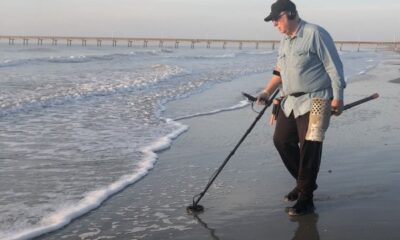Sports
Finders, Keepers: Metal Detecting For Fun & Profit
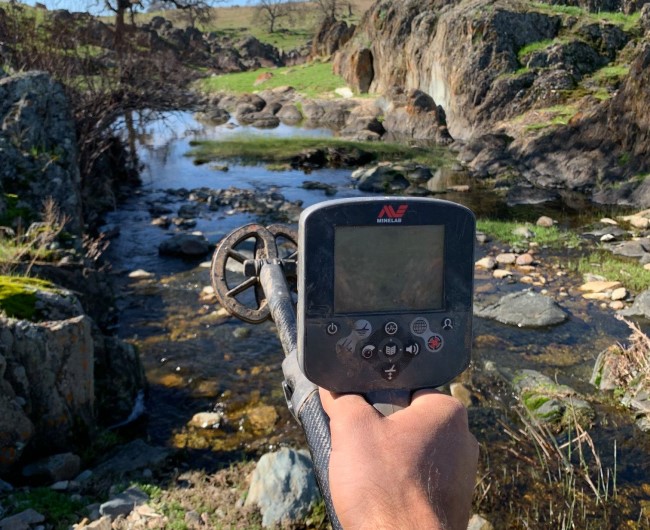
Courtesy Minelab Metal Detectors
The lure of buried treasure…
Untold wealth buried centuries ago hundreds of feet deep on an island, Civil War gold lost in the depths of Lake Michigan, sunken 16th century Spanish galleons off the Florida coast, strongboxes stolen off of stage coaches and buried, and lost mines in the far west… all just a few of the dreams which fill the heads of many treasure hunters both old and young. It doesn’t have to be a dream, though; you can start finding real buried treasures today with metal detecting.
To begin in this great hobby, the first item needed is a metal detector. Over the last five or six decades, many different models of detectors have shown up in the hands of treasure hunters. When purchasing your first detector, locate a dealer nearby and visit them. A dealer can allow you to try different models, teach you how to use them, answer any questions you may have (before, during and after your purchase), and even teach you how to properly retrieve items you find in the ground.
Once you have your first machine, there are a few more items you’ll need to begin your new hobby. First is a digging tool of some kind to unearth your treasure. This can be as simple as a flat-blade screwdriver or a garden trowel. Most detectorists use a digging tool made specifically for use with a detector. Another needed item is a pouch of some kind to hold your finds. A nail apron often can be acquired free from a local hardware store. Coin pouches which have belt loops and usually a couple of openings – one zippered to separate and secure your good finds from the trash – can be purchased from your dealer.
Another accessory, which could be considered optional, but is used by almost everyone with a detector, is a set of headphones. Most of these wire directly into the detector, but Bluetooth earphones can be purchased which work with many higher quality machines. Headphones allow detectorists to more easily hear signals from smaller or deeper targets, while lessening outside noise from common sources like wind and nearby traffic.
One final accessory, which is also optional but highly recommended, is a small item called a pinpointer. These are around 8 inches long, an inch or so in diameter, and often of a bright color to make it easier to find if you lay it down in grass or leaves. This is basically a mini detector, which helps the user locate small items in a hole, or in the material removed from a hole. A pinpointer is a solid investment, especially after one learns how difficult it can be to locate small treasures when coated with dirt or mud.
Once you have all of your equipment, you are ready to start. Usually, the first place to begin detecting is in your own yard. If it is 25 years or older, it probably contains lost coins, toys, and other metal items for you to find. Practice pinpointing the object and retrieving it properly (ask your dealer to show you the correct way to dig). Always fill your holes and carry out any trash with you. Once you have some experience in your own yard, ask your neighbor or relatives if you can search theirs. No matter where you hunt, always get permission before beginning.
Debbie Smikoski is an expert detectorist who travels around the country for Minelab helping both beginning and experienced treasure hunters better understand their machines so they can experience better results and more fun in the field. She says one of the best things a beginning detectorist can do is set up a “test garden” in their yard.
“Grab some old jewelry, various coins, nails, bottle caps and other metal objects and put them in the ground at various depths,” offers Smikoski, who advises that each item be marked with a piece of paper containing the name of the object and the depth at which it’s buried. “Practice detecting each item, taking note of the sound each item makes, as well as the numeric value your machine is returning on screen. It won’t take long and you’ll gain confidence in knowing what your detector is telling you,” she adds. “You’ll quickly learn what common items like pennies, quarters, nails, bottle caps, pull tabs, and gold rings sound and look like on your machine. It’s a fun process that will give you more confidence and save you a lot of time you’d otherwise spend digging ‘trash’ once you take to the field for a real hunt.”
Metal detecting can take place almost any time throughout the year, and there’s no license required. It can be done by one’s self or with friends and family, and it can also be a good source of exercise. Perhaps best of all, however, is that the rewards are real; the treasures are yours to keep.
-
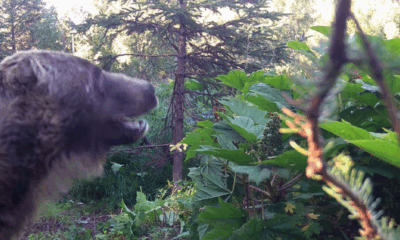
 Hiking & Climbing1 week ago
Hiking & Climbing1 week agoWhen Bears Bring the Drama: A Tail—or Should I Say “Tale”?
-

 Adventure1 month ago
Adventure1 month agoREACTION: Trump’s Make America Beautiful Again Agenda
-

 Gear2 months ago
Gear2 months agoLet Freedom RING! Primary Arms’ Independence Day Category Sale Starts NOW
-

 Adventure2 months ago
Adventure2 months agoU.S. Bighorn Sheep Going Home to Canada
-
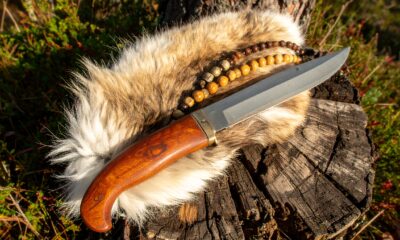
 Camping & Survival3 days ago
Camping & Survival3 days agoField Dressing 101: Knowing When It’s Their Turn
-
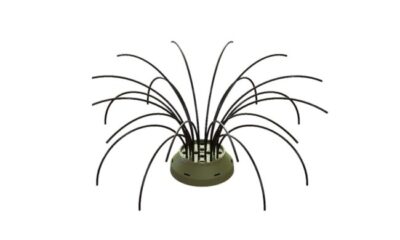
 Fishing1 month ago
Fishing1 month agoMy Wacky Bush Brings All the Bass to the Yard
-
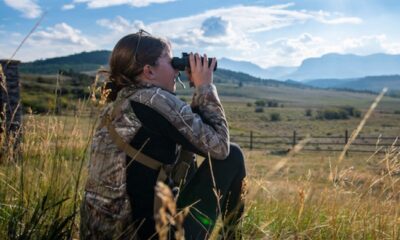
 Adventure3 weeks ago
Adventure3 weeks agoNo Ivy Required: University of Montana’s New Center for Hunting and Conservation

